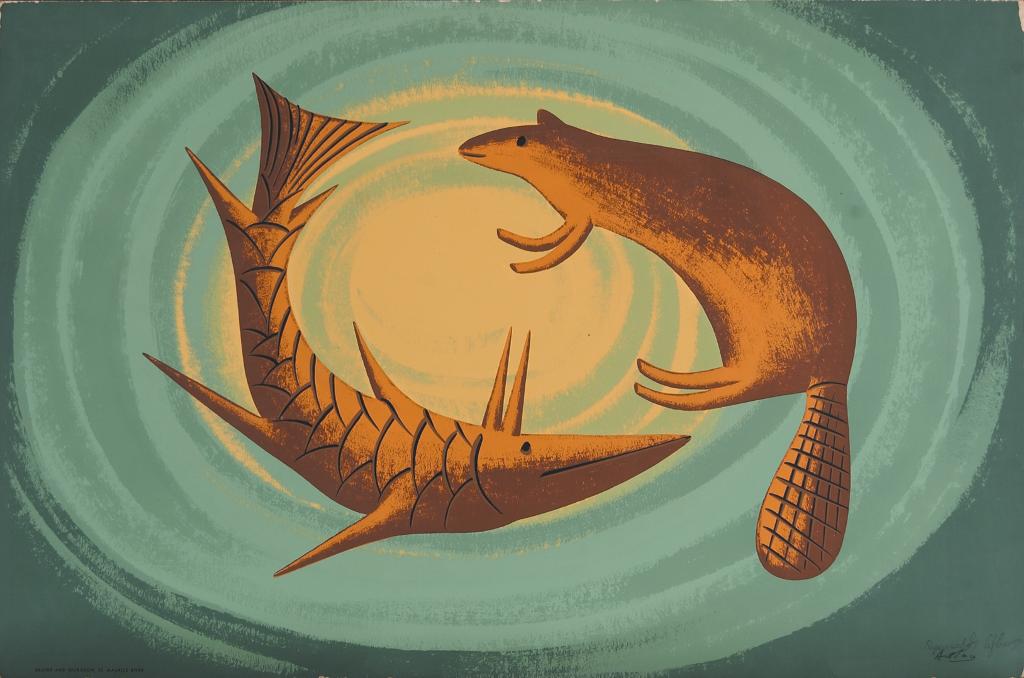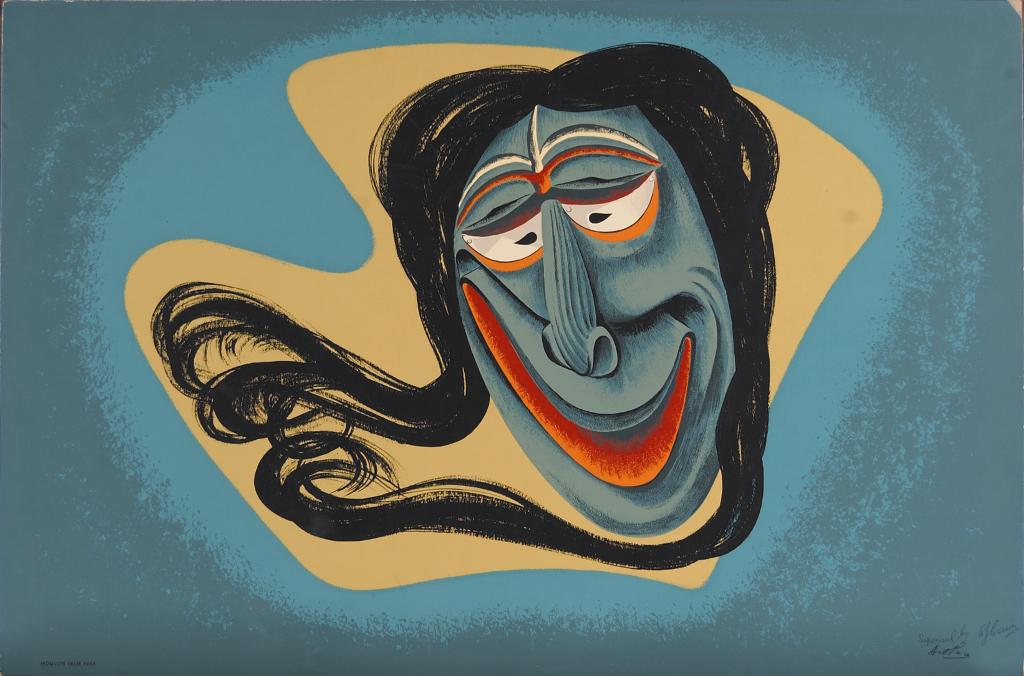Born in Edmonton, Canadian artist Arthur Donald Price attended the Western Technical School. He received a bursary to study at the Ontario College of Art in the evenings under various teachers, including Franklin H. Carmichael, George Pepper and Frederick S. Haines.
Naturally creative, he worked as a freelance commercial artist, and later went on to study dance with Boris Volkoff, build sets, and appear in productions. Later, Price studied pattern-making and industrial design. In 1943 he joined the National Film Board as a set designer and part-time animator working with Norman McLaren. It was while working at the NFB that he met and married Dalila Barbeau, daughter of the noted ethnologist and folklorist Dr. Marius Barbeau.
During his travels, Price became acquainted with the art of the Northwest Coast First Nations. He visited villages, taking notes and photographs and making drawings of First Nations art. He arranged the purchase and removal of totem poles, house posts, a community house and other pieces which were housed at the University of British Columbia.
Later, Price opened a studio where he was able to continue wood carving. In 1950 he began metal work in wrought iron, copper and sterling silver. In 1953 he was commissioned to carve two large totem poles and three other large carvings for Jasper Park Lodge in Alberta. In 1954 he began casting in aluminum, iron and bronze. This led to his production of an impressive body of work on public sculpture commissions for government, corporations and industry.
For the Sampson-Matthews project, in the 1957–1963 ‘Canadian Paintings’ series, Price entered the graphic field with ‘Iroquois Mask’, contributing a total of seven First Nations inspired pieces. These interpretations were based on original images by First Nations and Inuit artists in a variety of media, chosen by Marius Barbeau.
Arthur Price is represented in important corporate and public collections. A member of the Sculptors Society of Canada (1958), the Royal Canadian Academy (1960 – 1973); The Arts Club in Montreal (1958), and the American Craftsmen’s Council (1960).


